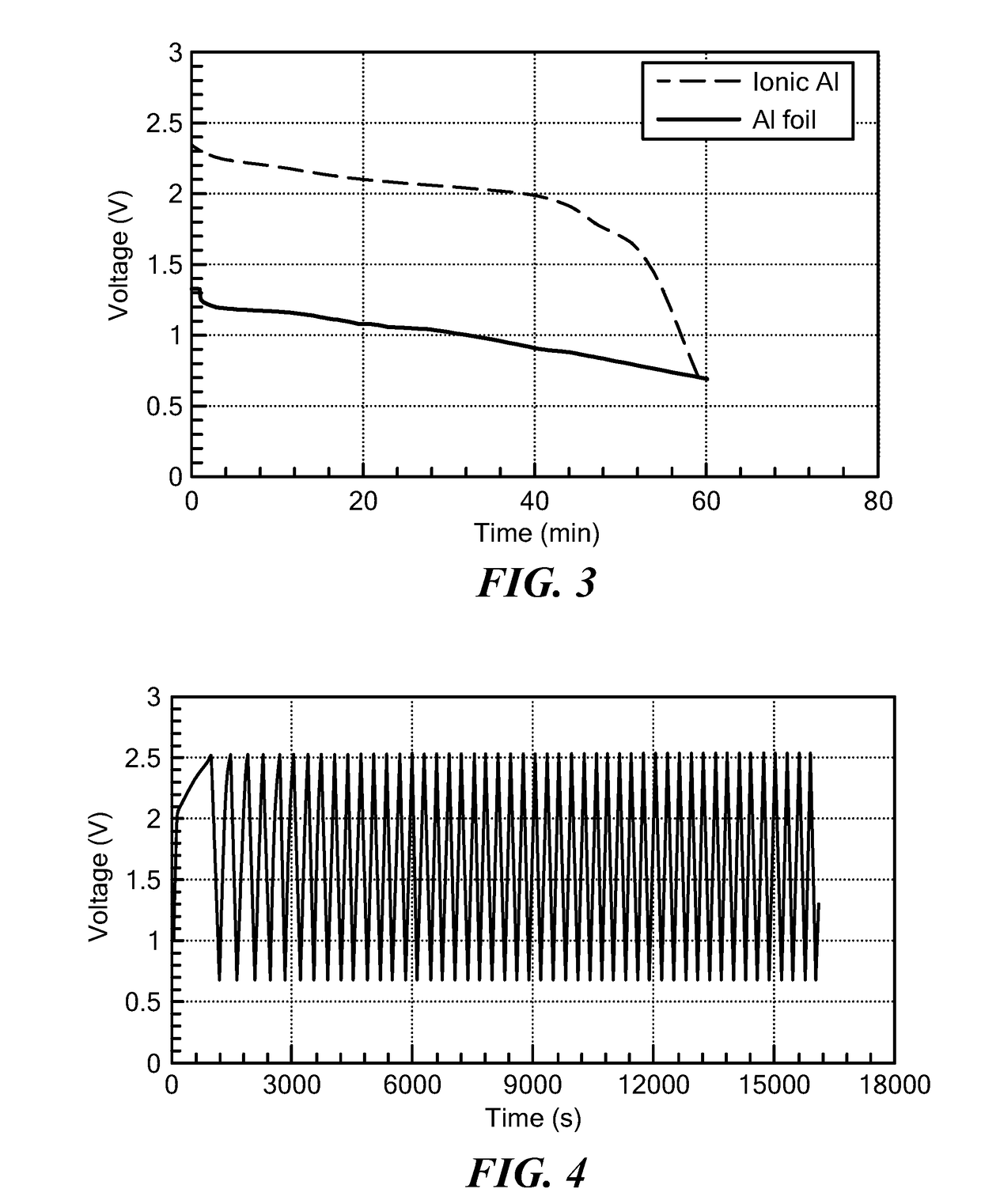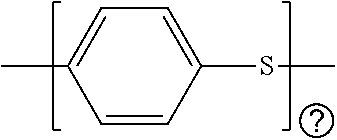Battery having aluminum anode and solid polymer electrolyte
a solid polymer electrolyte and anode technology, applied in the field of electrochemical batteries, can solve the problems of no practical aluminum intercalating cathode, low specific capacity of the system, and inability to meet the requirements of secondary systems
- Summary
- Abstract
- Description
- Claims
- Application Information
AI Technical Summary
Benefits of technology
Problems solved by technology
Method used
Image
Examples
example 1
[0118]The solid ionically conductive polymer material is synthesized in two aspects to describe how the material can be used in different aspects of the battery design:
example 1a
[0119]PPS polymer was mixed with the ionic compound LiOH monohydrate in the proportion of about 10-40% (by wt.) of the metal hydroxide, respectively, and mixed using jet milling. This undoped mixture is heated between 320-380° C. and extruded into a 10-15 micrometer thick film. The extruded film was then annealed at 150° C. for about two hours to increase the crystallinity of the mixed PPS polymer. Chloranil dopant was added via vapor doping to the resulting mixture at a temperature between 190-200° C. for 1-16 hours in a tube furnace under vacuum to synthesize a solid ionically conducting polymer material (PPS / LiOH / Chloranil). The synthesized material undergoes a color change during doping indicating that the chemical reaction takes place, and indicating the formation of the solid ionically conductive polymer material.
example 1b
[0120]In an aspect, the solid ionically conducting polymer material (PPS / LiOH / DDQ) is synthesized in a particulate form by first mixing the DDQ dopant and base polymer PPS in a ratio of one mole DDQ per 4.2 moles of PPS monomer. and heated between 250 and 325° C. to create a particulate form. Ionic LiOH is mixed to the particular form to create the solid ionically conductive polymer material.
[0121]Electronic conductivity of the materials in both Example 1A and 1B was measured using the potentiostatic method between blocking electrodes, and was determined to be about 6.5×10−9 S / cm (less than or less conductive than 1×10−8 S / cm).
[0122]Ionic diffusivity measurements were conducted on a compression molded particulate form of the PPS / LiOH / DDQ material using fundamental NMR techniques. Specifically, the diffusivity of lithium and hydroxide ions was evaluated by a pulsed gradient spin echo (“PGSE”) lithium NMR method. The PGSE-NMR measurements were made using a Varian-S Direct Drive 300 (7...
PUM
| Property | Measurement | Unit |
|---|---|---|
| electronic conductivity | aaaaa | aaaaa |
| melting temperature | aaaaa | aaaaa |
| ionic conductivity | aaaaa | aaaaa |
Abstract
Description
Claims
Application Information
 Login to View More
Login to View More - R&D
- Intellectual Property
- Life Sciences
- Materials
- Tech Scout
- Unparalleled Data Quality
- Higher Quality Content
- 60% Fewer Hallucinations
Browse by: Latest US Patents, China's latest patents, Technical Efficacy Thesaurus, Application Domain, Technology Topic, Popular Technical Reports.
© 2025 PatSnap. All rights reserved.Legal|Privacy policy|Modern Slavery Act Transparency Statement|Sitemap|About US| Contact US: help@patsnap.com



